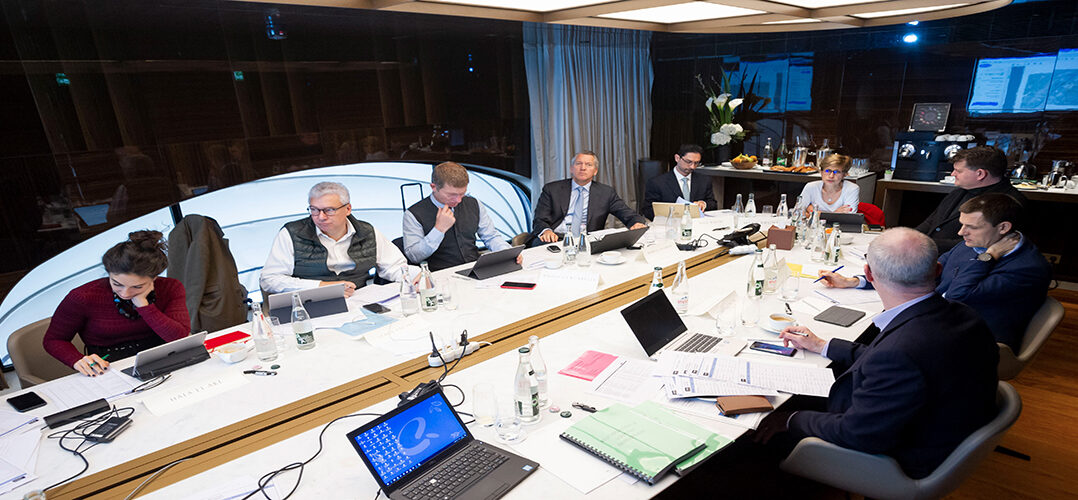The MIPIM Awards programme runs the whole gamut of property types and over the past three decades has demonstrated an unrivalled track record in identifying buildings that not only set new standards in design and construction, but which have stood the test of time. And in these uncertain times it is important to keep an eye on these long-term issues, so for 2020 the MIPIM Awards will become a key component of Paris Real Estate Week.
Last January, the jury of the MIPIM Awards selected 43 outstanding projects from 19 countries in 11 categories, and the judges felt it was important that they received the recognition they deserved, and the postponed awards dinner will now take place in Paris on September 15.
The winners will be selected on a 50:50 basis, with delegates’ votes carrying equal weight with the jury’s own votes. Those accredited to MIPIM 2020 and the Paris Real Estate Week will be able to vote online for the projects of their choice between 17 August and 11 September. In addition, the jury of real estate experts from around the world have the right to award one additional prize – the ‘Special Jury Award’, which goes to their favourite project amongst all the entries they considered.
« In these exceptional circumstances, I would like to call on the global MIPIM community to mobilise so that every one of you can voice your opinion via an online public vote on the outstanding work from these teams around the world. Vote and encourage others to vote, so that the MIPIM Awards ceremony fully reflects our collective ambition. Today, more than ever, our sector must reinvent itself to embrace new urban practices and address sustainability challenges » – Meka Brunel, CEO of Gecina and chair of the MIPIM Awards jury.
Category focus: Best Residential Development
Each week, we will focus on one of the 11 awards categories. To begin with, the best residential development has been a fixture on the awards programme since the 1990s and past winners range from outstanding single homes to entire new neighbourhoods.
Among those which have set new standards are Turning Torso in Malmo and Mountain Dwellings in Copenhagen.
Turning Torso, designed by Santiago Calatrava, is a residential skyscraper in Malmo’s Western Harbour area that forms a prominent landmark at the Swedish end of the Oresund Bridge. Conceived as the world’s first twisting skyscraper, the 54-storey tower was built and is owned by Swedish co-operative housing association HSB. At 190 meters, it remains the tallest residential building in Scandinavia, offering views as far as Copenhagen, Falsterbo and Helsingborg.
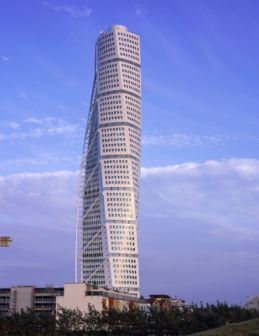
And in Copenhagen, on the opposite bank of the Oresund Strait, Mountain Dwellings consists of 80 penthouses on the sloping roof of a multi-storey car park. Designed by PLOT, they climb for 11 storeys, creating an artificial mountain face. In form, each of the apartments has an L-shaped layout wrapping around a private courtyard and garden reflecting the traditions of the suburban rowhouse.
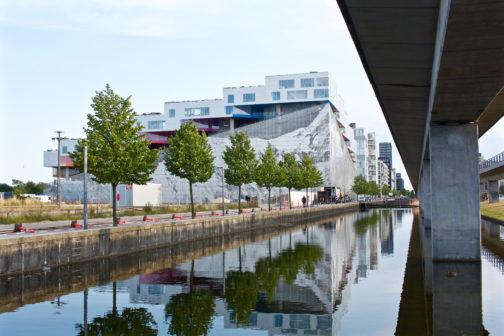
So what of this year’s entries? The four shortlisted projects are (descriptive texts provided by finalists):
Manhattan Loft Gardens – The Stratford
London, UK
Developer: Manhattan Loft Corporation
Architect: Skidmore, Owings & Merrill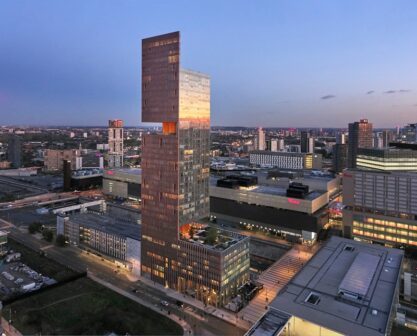 Manhattan Loft Gardens – The Stratford offers a new residential paradigm by re-envisioning high-rise living and expressing how a rich variety of residential typologies can be brought into a vertically stacked building. The 248 apartments reinterpret London’s most successful residential typologies, taking cues from the city’s garden squares, while gaining inspiration from a diverse mix of dwelling types. Working as an integrated group of architects and engineers, the design team shaped the tower’s innovative steel and concrete form to create impressive communal spaces that would provide a natural platform for interaction, while working from the inside-out to maximise views and natural light.
Manhattan Loft Gardens – The Stratford offers a new residential paradigm by re-envisioning high-rise living and expressing how a rich variety of residential typologies can be brought into a vertically stacked building. The 248 apartments reinterpret London’s most successful residential typologies, taking cues from the city’s garden squares, while gaining inspiration from a diverse mix of dwelling types. Working as an integrated group of architects and engineers, the design team shaped the tower’s innovative steel and concrete form to create impressive communal spaces that would provide a natural platform for interaction, while working from the inside-out to maximise views and natural light.
Oriental Villa
Hangzhou, China
Developer: Greentown
Architect: GOA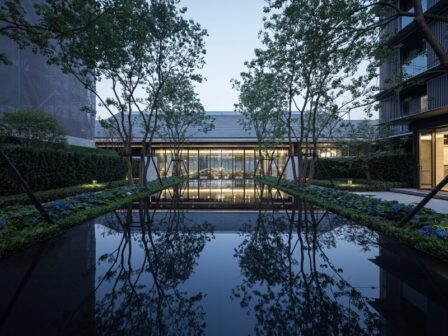 The project is a duplex house that attempts to combine tradition with modern style in design. Modern lightness and traditional heaviness are unified and fully expressed in this project.
The project is a duplex house that attempts to combine tradition with modern style in design. Modern lightness and traditional heaviness are unified and fully expressed in this project.
Residenza Ra Curta
Montagnola, Switzerland
Developer: Abacho SA
Architect: A++ Human Sustainable Architecture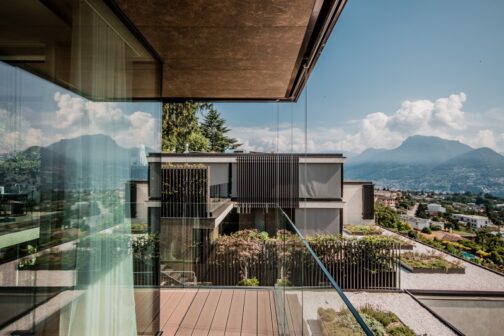 Borrowing from the warm earth tones of the natural world around it and encapsulating spots of colour which perfectly complement the views from expansive banks of windows, this villa has a style that is both inviting and representative of high-end sophistication. Creamy colours, palpable textures and the finesse of lines that run throughout the design, paying tribute to classical forms with a decidedly modern edge. And a healthy amount of natural stone strategically installed throughout the interior space manages to further emphasise the manmade/nature duality.
Borrowing from the warm earth tones of the natural world around it and encapsulating spots of colour which perfectly complement the views from expansive banks of windows, this villa has a style that is both inviting and representative of high-end sophistication. Creamy colours, palpable textures and the finesse of lines that run throughout the design, paying tribute to classical forms with a decidedly modern edge. And a healthy amount of natural stone strategically installed throughout the interior space manages to further emphasise the manmade/nature duality.
WAVE Waterside Living Berlin
Berlin, Germany
Developer: Bauwerk Capital
Architect: GRAFT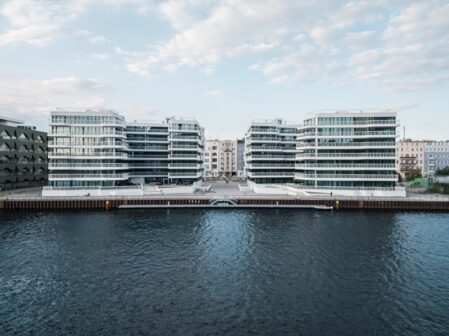 In 2019, two residential buildings were completed on the north bank of the Spree in Berlin’s Osthafen between the districts of Kreuzberg, Friedrichshain and Treptow. The concept for the new buildings derives from the particular qualities of its waterside location. The design for the ensemble provides public access to the riverside zone along the Spree. WAVE Waterside Living Berlin not only incorporates the waterfront path, but also orients the building to the south overlooking the water with spacious courtyard gardens and yacht-like balconies. The roof is designed for communal use with rooftop terraces and playgrounds for both public and private communal activities.
In 2019, two residential buildings were completed on the north bank of the Spree in Berlin’s Osthafen between the districts of Kreuzberg, Friedrichshain and Treptow. The concept for the new buildings derives from the particular qualities of its waterside location. The design for the ensemble provides public access to the riverside zone along the Spree. WAVE Waterside Living Berlin not only incorporates the waterfront path, but also orients the building to the south overlooking the water with spacious courtyard gardens and yacht-like balconies. The roof is designed for communal use with rooftop terraces and playgrounds for both public and private communal activities.
